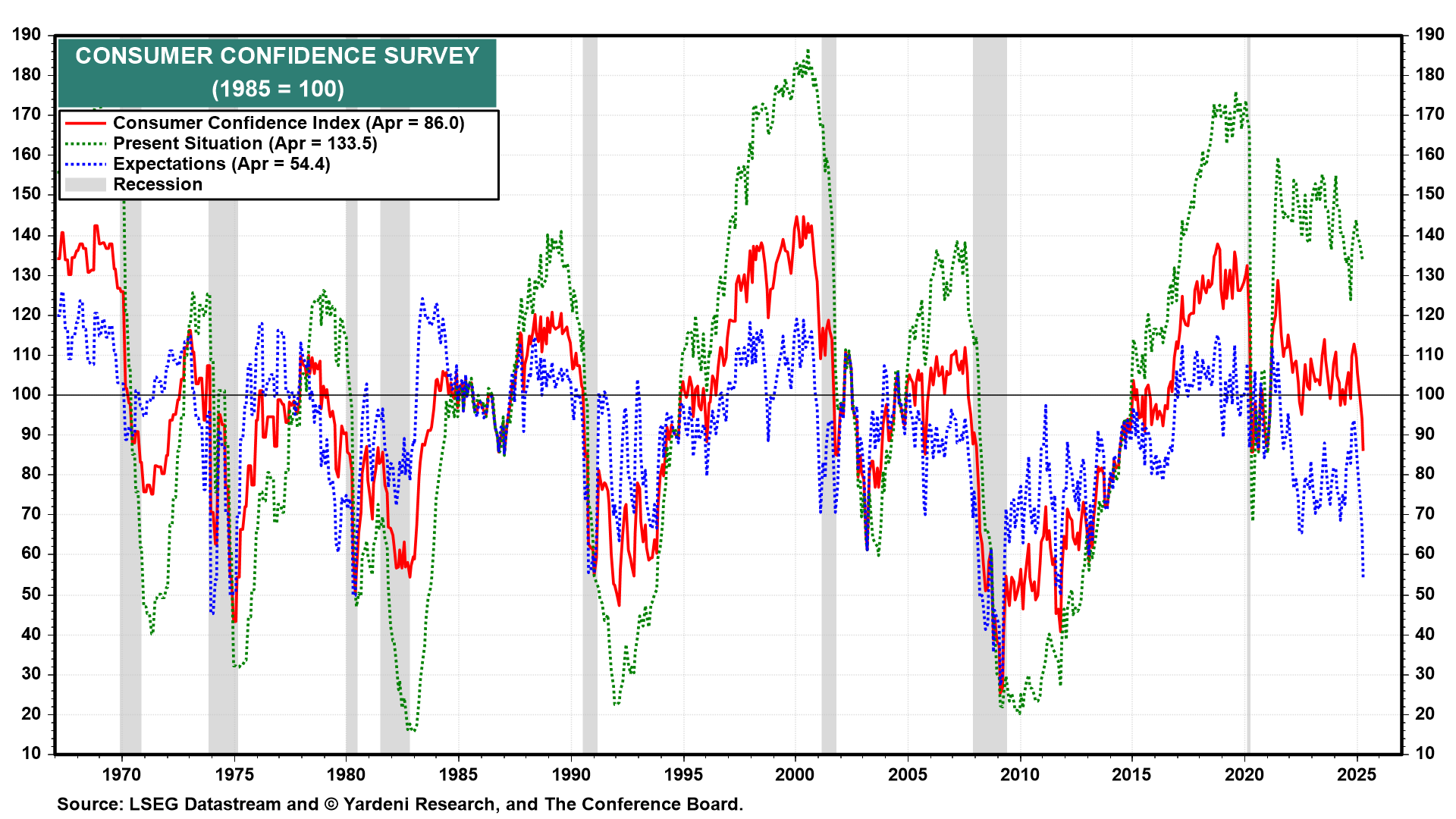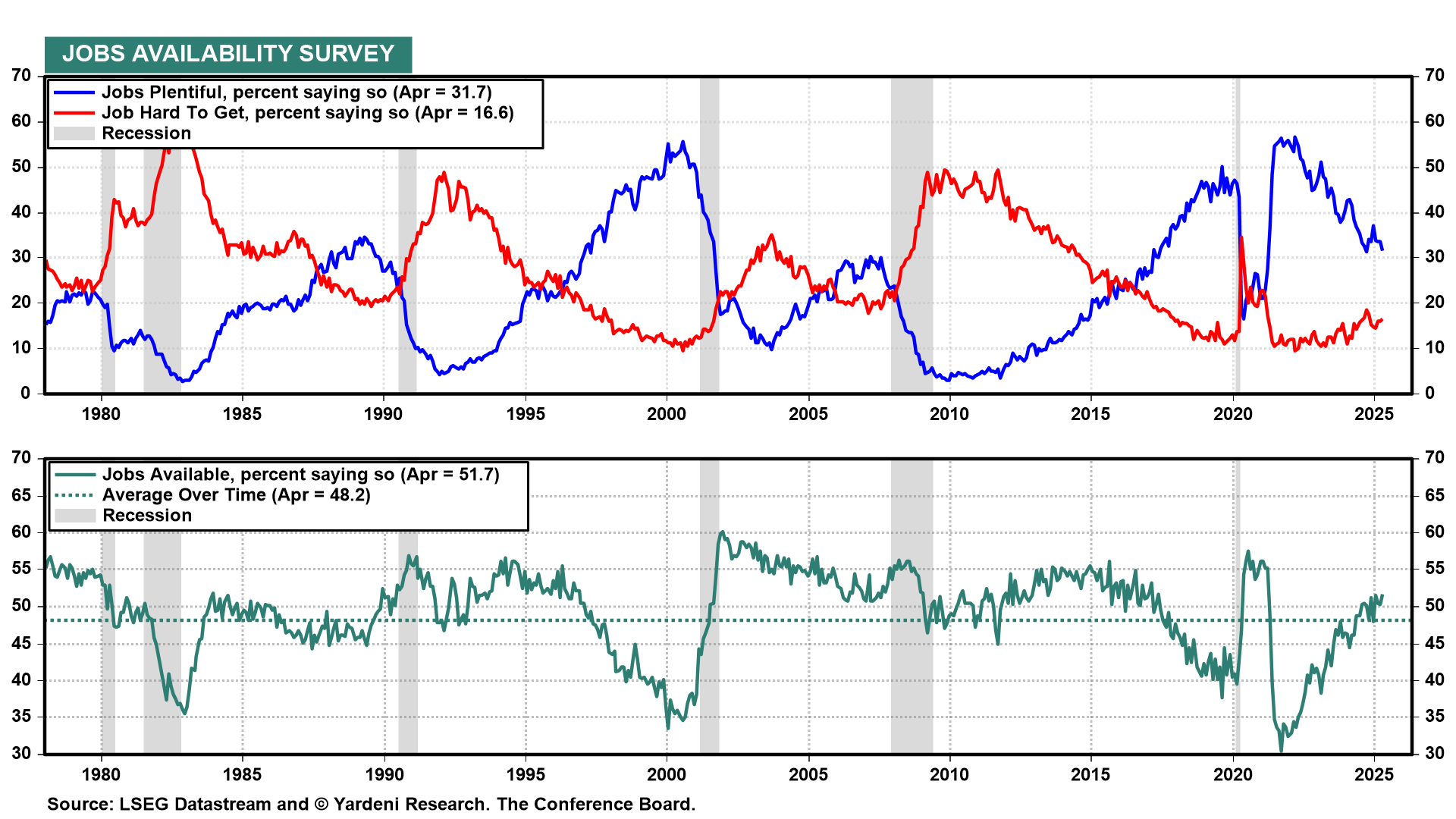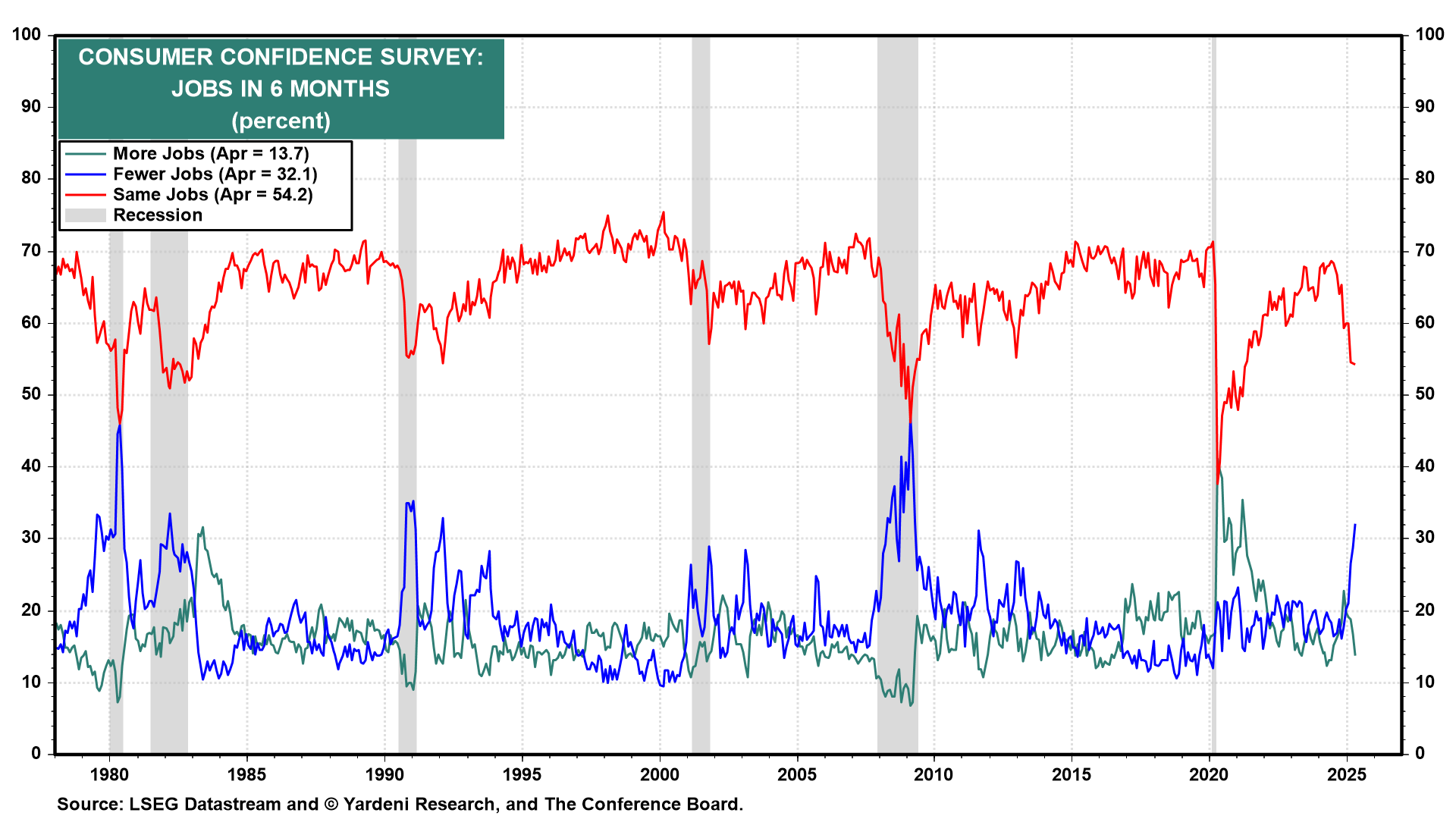Stock prices rose and bond yields edged lower yesterday on hopes that the Trump administration will soon start to deliver trade deals and the Fed might deliver cuts in the federal funds rate if the labor market shows signs of weakening. Commerce Secretary Howard Lutnick said yesterday that the administration has its first trade deal, but it is not fully finalized. He declined to name the country involved (Freedonia?).
Yesterday’s Consumer Confidence Index (CCI) survey for April showed that current labor market conditions remain solid this month but are expected to get weaker. The March JOLTS report confirmed that the labor market remained robust last month. Let’s review the implications of yesterday’s data:
(1) Consumer Confidence . As we’ve long argued, Americans tend to go shopping when they’re happy. They also go shopping when they are depressed—the idea being that even the dourest of consumers will pull out the plastic as long as they have jobs. Shopping releases dopamine in our brains, which makes us feel better.
Judging from the Conference Board’s CCI, consumers have become more depressed in recent months (chart). The index fell to a nearly five-year low in April, down 8 points to 86.0. It’s the fifth straight monthly decline, the worst such stretch since 2008. The decline has been led by the CCI’s expectations component. The present situation component is relatively upbeat!

Current assessments of the availability of jobs are holding up relatively well. The ratio of respondents saying jobs are plentiful is roughly double the number saying jobs are hard to get—31.7% and 16.6%, respectively (chart).

Roughly 32.1% of respondents think there will be fewer jobs in September. About half that many—13.7%—expect there to be more jobs in six months (chart). This, however, is balanced by 54.2% thinking conditions will be roughly the same. Considering the bull market in negativity emanating from the economics community, that’s a reasonably upbeat scenario.

Also holding up well, all things considered, are stocks. A key reason is that investors believe that the Fed will cut rates if necessary. We aren’t in this camp. But it is possible if the "stag-" gets more attention than the "-flation" component of the stagflation risk confronting policymakers.
Original Post
